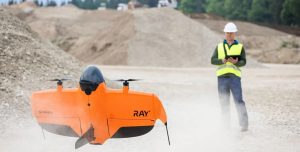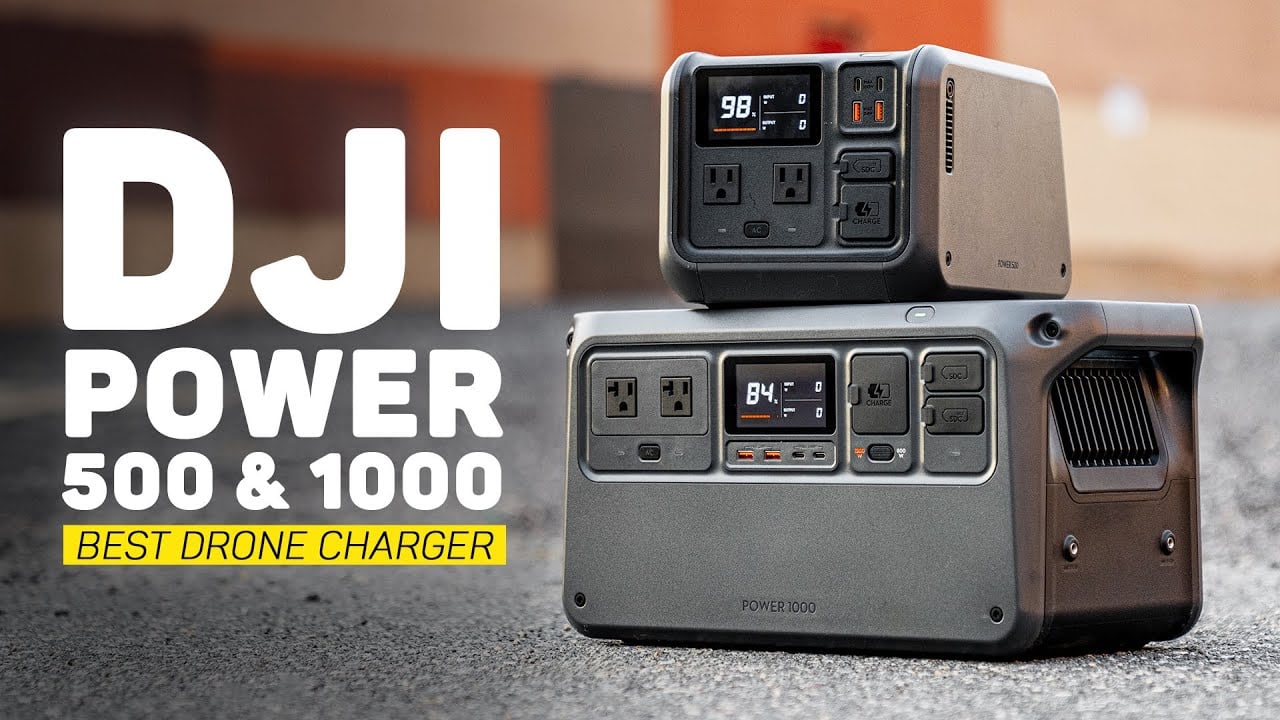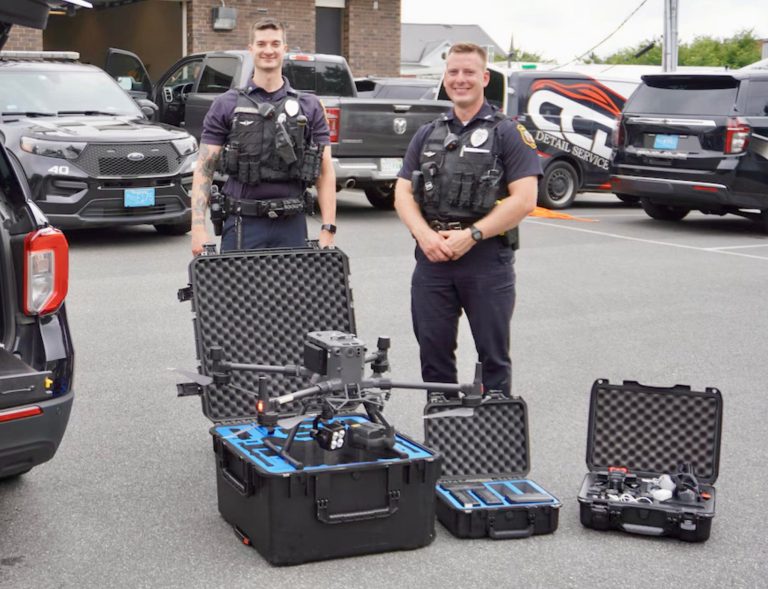You know I’ve been waiting for DJI to make their own power station and what do you know, they finally have! This here is the DJI Power 500 and the DJI Power 1000. This is such a no-brainer release from DJI because they make such power hungry devices, so it makes sense to make a battery to charge them up on the go. To give you a real world example of how the Power 1000 came in handy, I was just recently up in Ottawa shooting some new content with the DJI Dock 2. As we were bouncing around between spots, I was effortlessly powering this massive device to get the drone up and running.
Power Station Market Overview
It’s no secret that these portable power stations have been popping up everywhere. A lot of companies are making them and they have gotten really good over the past couple of years. They charge fast, output a ton of power so you can plug in just about whatever you want, and they come in so many different sizes. So with a very saturated market, how do DJI’s power stations stand out amongst the rest?
In my time using these power stations and others from other companies, I can say there are three main factors:
- Price
- Connectivity
- Style and ergonomics
DJI Power Station Specs and Comparison
Before we dive into what makes these special, let’s cover some basic things that you should know. The first is that there are actually two different sizes of this power station. The smaller one is called Power 500 and the larger is called Power 1,000. Here are the most notable specs of each power station:
- Weight
- Capacity
- Output and input power
- Ports that each unit has
Of course the larger power station is going to have an edge in basically every category, but I’m not showing you these specs side by side for comparison’s sake. It’s more so to help you understand which of these you think is the right fit for you.

I can say that even though I prefer to carry around a larger battery that has a larger capacity so that I have more juice with me than I know I’m going to need for the day (so I never run out of power), I still find myself carrying around the Power 500 over the Power 1000 because of its size. It’s so easy to just grab right off my shelf, throw it down by my side, walk out to my car and bring with me so all my devices stay charged during the day.
Don’t get me wrong, the Power 1000 is lightweight too for what it is, but there’s a reason this thing has two handles. It definitely requires more thought and planning depending on when you want to bring it along than the smaller Power 500.
Input and Output Power
Okay, so let’s talk about input and output power now, because this is a very important thing to look at when purchasing a power station. You want to make sure it has a high input power so that the big battery inside charges up nice and fast when you plug it into the wall. You also want to make sure it has a high output power so that when you’re plugging in multiple devices, it doesn’t just shut down on you and can distribute power evenly amongst everything plugged in.
Of course, the bigger Power 1000 is going to be superior on the input and output power front, but the Power 500 holds its own with a nice maximum power transfer that can handle most of your everyday devices like drone batteries, cameras, laptops, phones, and even heavier equipment like studio lights or studio displays.
Both of them can also charge up pretty quickly with a high input power relative to their capacity. They can each be fully charged in 70 minutes or charged to 80% in a quick 50 minutes.

Real-World Example: Powering a Space Heater
Let me give you a real world example as to why a high output wattage on a power station is important. Here we have a space heater – this thing is a power hungry monster. It usually wants anywhere between 1,000 to 1,400 watts of power to operate on high.
So if we go ahead and plug this into the Power 1000, turn on the AC outlet, this now gives us power to the space heater. We’ll go ahead and turn this on. The watts are going to jump up super high – we’ve got 697, 827, 1380, 1300. So right now we are operating at about 1300 watts of total output power. This also includes charging up the mini batteries here, but as you can see it is effortlessly powering this space heater on high.
I can say that because this is drawing so much power, it’s going to kill the battery super fast. For example, it estimates that we have 30 total minutes of runtime to power this big old device here.
Now let’s go ahead and plug this into the Power 500. We’ll turn on the AC power (remember the maximum output of this is 1,000 watts), and turn on the heater. It starts to climb to 1300, 1400 watts and then shuts off. So there the breaker must have tripped inside – it totally kicked off the AC outlets because it was drawing in so much power.
It’s nice to see that it could handle surges of power up to say 1,500 watts, but once it started to sustain that power, it just instantly shut off. But there’s kind of a real world example as to why you might want a more powerful power station.
As you can see though, I can easily charge up a bunch of batteries all at once on the Power 500, which again makes it my choice to kind of bring with me on the daily, because I’m just charging batteries, I’m not trying to bring a portable space heater with me.
Capacity
Speaking of capacity, that’s another key element of a power station. The Power 1000 has twice the capacity of the Power 500. In my use of these devices, this is the approximate usage I’ve gotten out of them for my everyday devices that I use.
This means that really for most of your daily activities, if you’re a solo traveler, both of these should be perfect. However, if you plan to share this power station and let a group of people enjoy the energy that you brought along, it could go pretty fast. Like if I’m out with four or five friends, we’re all flying drones and we’re all also charging off of one of these power stations, chances are the energy probably is going to go quick and you’re going to run out of power.
But what’s nice is that you have a high enough output wattage to literally fill up every single port on the front of either of these power stations and be charging a drone battery all at once without any hiccups.

Ports and Connectivity
Speaking of those ports, this is equally important to the power and capacity of these batteries. Oddly enough, both batteries have the same exact ports, except for the extra SDC port here on the Power 1000 which lets you interface with more solar panels for example. This is really strange as usually when a company comes out with two different power stations of different sizes, the larger power station usually has more outlets and more ports to interface with as you have a ton of space. Like here on the front of this battery, you’ve got so much space down here to add potential extra ports.
With that said, there are two AC outlets that are decently spread out so you can plug in cords that have larger bricks if necessary without blocking each other. You’ve got two USB-C ports, two USB-A ports, the SDC port which we already discussed (there’s a second on the larger Power 1000), and you have that input port for charging the actual battery.

Something that I really like is the physical switch right there next to the input port that lets you choose whether you want to charge the battery at the maximum wattage or if you want to charge it at half that speed. For the Power 500 this would be 540 watts or 270 watts, while the Power 1000 gives you the option of 1,200 watts or 600 watts.
It’s really nice to have this option available for both of these power stations because I don’t want to kill the battery overnight and charge it at the maximum speed if I don’t need to. Like if I’m not going to be using this for hours on end, why not charge the battery at a slower speed to preserve the health of the battery packs inside?
Now sure, if I’m going to be on the road, I’m stopping at a quick restaurant and I want to juice the power station up as fast as possible while I’m stopping and I’m near an outlet, I can plug it in, charge at the maximum speed, get as much power as possible and then get back on the road. So again, it’s nice to have the flexibility and also the ease of use to just flip that switch on the front to change depending on what my needs are.

There’s also a screen here on each of the devices that shows you information like the current state of the battery, what ports are currently drawing power, the battery capacity remaining as a percentage, a timer that shows you how quickly the battery will be charged or depleted depending on current usage, and of course the input and output power boldly displayed in watts.
USB-C Ports
Now, the USB-C ports on both of these power stations differ in a couple of ways. For example, the output wattage on the Power 500 from each USB-C port is 100 watts, while the output power from each of the USB-C ports on the Power 1000 is 140 watts, which is a slight difference. But for example, for somebody like me that uses a MacBook Pro 16-inch, I know that I get a 140W brick in the box with my laptop. So it’s nice that I can get the full power out of the USB-C ports here on the Power 1000, whereas it’s going to charge just a little bit slower on the Power 500. But 100 watts is a really good speed and can usually charge almost any device at full speed.
Here’s another way that these ports differ: they actually act as a form of inputting power on the Power 500, which is the smaller power station. It can input power at up to 200 watts, which sure isn’t blazing fast like the included charger, but in a pinch where you’re in a hotel or on a road trip and you forget your charger, this would be more than sufficient to charge up the power station in a few hours or overnight.
I can’t help but think that this same feature would be so important to have on the Power 1000 for the reason I just mentioned – being able to charge it if you forget the actual charger for the device itself. Sure, if it only charged at 200 watts it would take a few hours to charge up this entire battery inside of the Power 1000, but it’d be better than having nothing. It would be nice to carry one cord with me on my trips and just charge up everything with USB-C, but because this can only charge up with the included charger, I’ve got to make sure I always have that on me.
DJI Power Station Advantages
Okay, so I would say that those three things right there – the input and output power, the capacity, as well as the available ports – are right in line with all the other power stations available on the market. Sure, some might have more AC outlets, some might have more USB-C ports, but at that point it’s kind of splitting hairs. You’re going to get a solid power station in all three regards if you buy either the Power 500 or the Power 1000. They’ve got a high input power, a high output power, a nice capacity to charge and power things on the go, and also have enough ports on the front to make sure that you can output power and interface with any device that you might have.
Now what I want to do is get into some of the things that make these power stations a little bit more unique than others on the market, because as I mentioned, there are literally dozens you could choose from. So what makes the Power 500 and Power 1000 unique and stand out from the rest?
SDC Port and Fast Charging
First is the SDC port, which yes, is nothing special on the surface level and will primarily be used for a solar panel to input power. But DJI has made a special set of fast chargers for their own products to take advantage of the higher output power that this port offers.
For example, I have a special cord that DJI manufactures that I can plug from the SDC port directly into my Air 3 battery to charge it up super fast. To give you a comparison, when I charge the Air 3 directly through the drone from the USB-C port, the maximum power it draws is 63 watts, which means it can charge from 10% to 100% in 1 hour and 6 minutes. Compare this to plugging it into the fast charger – it reaches a maximum of 123 watts and charges in just 48 minutes. That is 18 minutes per battery faster, which will make a significant difference when you’re cycling through batteries throughout the day.

To me, this is a pretty big game changer because there are some shoots that I go on where I need to be charging batteries constantly, as fast as possible, to keep up with how much I fly. For example, I have nine Mavic 3 batteries, and sometimes I get home and all nine Mavic 3 batteries are completely depleted. So being able to go and plug them in and charge them up so that I can basically cycle between two batteries – one is charging up fast while one is being flown – really is a nice treat.
Now here’s the one issue: you lose the convenience of having the charging hub. So you need to make sure that you’re constantly swapping out batteries as they’re fully charged, because you can only plug in one battery at a time. So it really depends on what you need: do you want the speed of charging up batteries as fast as possible and you just need to stay on top of it and make sure you swap them on and off? Or do you want to just plug it into the hub, set it and forget it, and let them charge up on their own and go 1, 2, 3, so on and so forth?
Now for your reference, DJI makes this fast charger for other products in their lineup. They make a fast charging cable for the Mavic 3, the Air 3, the Matrice 30, and the Inspire 3. All these increase the wattage that the battery charges at and plug directly into the battery.
So like here’s a quick scenario for you: let’s say you buy the M30 or the Inspire 3 and you realize that those drones take two batteries at once. So in order to fly with these drones, you need to plug in two batteries. Therefore, being able to operate off a charging hub is really nice because you know that two batteries are going to be charging at once so you can take them off, plug them in, and start flying immediately.
Well, if you’re going to be using the Power 500, you can only plug in one battery at a time, which means when you plug it into the SDC port, you can only be charging one Inspire 3 battery. And then once that Inspire 3 battery charges, you can take it off and put on another so that you then have two for one single flight. So if you see where I’m going here, it’s going to be a little bit cumbersome to try to charge one battery at a time off of the Power 500 for the Inspire 3 or the M30 that requires two batteries at once.
So maybe you buy the Power 1000 instead and use both SDC ports to charge two batteries at once so you can make sure that you have enough power for each flight. As I already mentioned, in my opinion this is a pretty big game changer for me and it really does solidify carrying around these power stations over the other power stations that I own, because I primarily want to charge my drone batteries on the go. And now that there exists an option to charge my drone batteries faster, I’m always going to reach for the Power 500 and Power 1000.
Design and Ergonomics
To go back to the design really quickly, I also think that there’s something that sets this power station apart. I really like the design, I think that the aesthetic is so DJI and it overall looks good. It’s got the same power-on sound as DJI’s products. The handles are ergonomic, the screen is really bright and snappy, and really the build quality is overall top-notch. These design elements amongst others really do make using these two power stations a joy.

I mean, as I mentioned, the switch on the front really makes it easy to control your charging speed directly on the device. I also really enjoy the fact that all of the ports are right on the front of the device, so they’re on the same side of the power station. Some of these power stations will put the output ports on the front and the input ports on the back, which I can understand, but it can be annoying if I want to place this out of the way, say against a wall or in the back of my trunk. Having everything right there on the front and easy to access just makes things more simple.
Safety
Now let’s talk about safety, and this is something that is very important to discuss when talking about a battery of this size that can output and input as much power as the Power 500 and Power 1000. You really want to make sure that you’re getting it from a reputable company that has a good history with batteries, and DJI has been developing batteries of all different kinds for their drones for years, from the tiny mini drones to the larger Inspire.
And in case you’ve never seen it, even the batteries on the larger Agras drones are themselves basically a power station. These batteries are insanely massive and probably hold more power than the Power 500 and Power 1000 combined. This, combined with the fact that all these batteries are intelligent flight batteries (so for example, the Avata 2 battery here has computers and chips inside to let the battery know what is going on at all times) means it’s going to look out for any potential faults. It’s not going to draw too much power, it’s not going to overheat or catch on fire, it’s got computer chips on board to make sure that it is safe to use, and all this technology has been brought over to DJI’s power stations as well.

For the sake of not getting anything wrong, this here is the exact verbiage that DJI has on their website about the safety and usage of these power stations: they’re made with safety as the number one priority and with longevity in mind. So just know that when you pick up this to charge your drone or power any device you might have, you’re getting one of the safest power stations that you can buy on the market.

Solar Panel and Infinite Power Hack
Okay, so switching gears now, let’s talk about the infinite power hack, and that is the solar panel you can purchase separately to power up these power stations while on the go. DJI doesn’t actually manufacture the solar panel themselves, but this is the Zegis 100 watt panel that is fairly small and lightweight. It folds up for easy traveling and of course opens up to capture energy from the sun. You can rig up to three of these to the Power 500 and six of them to the Power 1000 using the SDC ports and the solar adapter that feeds that energy into the battery.
The reason I say this is an infinite power hack is because if you do the math and look at how much power you can input versus how much power you might be outputting, you could potentially just draw energy directly from the sun to power and charge your devices. So for example, if I have one solar panel hooked up to my Power 500 inputting 100 watts, I can therefore outpace almost any DJI drone battery. So if I’m charging a Mavic 3 battery at say 65 watts off of the charging hub, I’m never going to outpace the solar panel if I’m getting peak power from the sun. I’m going to be drawing energy right from the solar panel and never actually touching the battery inside.

Even if I’m charging more power hungry devices like say my MacBook Pro that I had mentioned charges at a maximum of 140 watts, and maybe I’m charging other devices too like my remote controller and let’s say my headphones and anything else I might have on me, sure I’m going to be taking power from the battery, but I’m instantly replacing some of it from the solar panel. So I therefore have more capacity inside than what is actually advertised because I’m slowly inputting it while also using it.
Now I know that using a solar panel can be clunky, from bringing it with you to actually having to set it up to make sure that it’s always facing the sun. But really, if I was going to be purchasing a power station, I’d probably go the route of picking up the Power 500 so that I can bring it with me on the daily, use it as I need it, but then on days where I know I’m going to be drawing more power (maybe I have friends with me flying), I’m going to bring that solar panel with me so I can actively put power back in and again get more capacity out of the smaller battery because I’m drawing energy from the sun.
So again, I’d buy that solar panel, keep it at home, and only bring it with me when I need it so that I can charge up my smaller power station which is going to be a little bit easier to bring around with me on the daily.
DJI Power 1000 and 500 Pricing
Okay, so now moving into the final thing that makes these power stations so appealing, and that is the price. At the time of filming this video, the Power 500 is retailing for $379 and the Power 1000 is retailing for $699. Now here’s the thing: these are listed as sale prices. The real prices are $499 and $999 respectively.
At their sale price, they are easily the least expensive options in their class. Like Anker’s Solix line of power stations, which kind of goes head-to-head with the Power 1000, is listed for $1,000 for a very similar battery with very similar specs. So coming in at $300 less expensive makes DJI’s power station very attractive.
Now I have no idea if this is going to be the permanent price on these power stations. I know that sometimes these companies will say that there is a sale when really that’s the actual price of the power station, it’s just kind of to try and drive demand and drive urgency of wanting to buy because hey, if I miss the sale I might not get the best deal. So again, I’ve got no idea if that is going to be the price moving forward, but I would say that if it is, I hope that DJI can keep up with demand and make enough of these because they are priced very very competitively for what they are.
Wrapping up my Review of the DJI Power 1000 and 500
Now I’ve used power stations from a lot of different companies – Jackery, EcoFlow, Anker – there’s a lot of them out there from a lot of different companies. I can say though, what DJI has offered, especially for their very first power station, is very good. For me, these are my go-to power stations as of now just because of the fact that I can charge my drone batteries the fastest. And if I need to charge my laptop, or charge my Apple Vision Pro, or charge my iPad, or charge my goggles, or whatever, charge anything that I have on me, I know that I can keep up with it because it’s got a nice high output power and I can charge them fast with the high input power. So it really does check all of the boxes and gives you some extras.
Like I’ve never seen a power station of this size be able to be charged over USB-C. That in my opinion is a really cool feature to have for those just-in-case moments.
Now which one is right for you, I really can’t answer that. Look at both of these, see what they offer, and see which one is going to fit your workflow the best. Again, even though I’m such a power hungry user with all of my drone batteries, I find myself using the Power 500 the most because it’s so lightweight and easy to carry around. I can grab it with me, bring it down the elevator in my apartment, go to my car without hurting my arm from carrying this thing for like two or three minutes straight.
Anyway, thank you guys so much for watching. Let me know your thoughts on the Power 500 and Power 1000 in the comments below and as always, I’ll talk to you later. Peace!
Discover more from DroneXL.co
Subscribe to get the latest posts to your email.




















+ There are no comments
Add yours